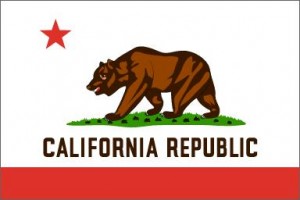Some background: Two important ways that state and local government raise revenue are through taxes and fees. Taxes (income, property and sales primarily) go into the General Fund and are used for the general costs of government. State law requires a 2/3 majority to pass a tax increase.
But fees – on everything from cigarettes to gas suppliers – require just a  majority vote by the state or local legislature/city council. The catch is they must be used to pay for a specific service or program benefiting individuals or businesses.
majority vote by the state or local legislature/city council. The catch is they must be used to pay for a specific service or program benefiting individuals or businesses.
State and local governments often turn to fees to free up money from the General Fund, which is used to pay for services like schools, roads, etc. They’re also easier to get enacted because they only take a majority vote, and no vote of the people. And it often seems fair to, say, charge gasoline or oil suppliers to pay a fee to help mitigate the costs of cleaning up air pollution or MTBE contamination related to their product.
Prop. 26 would change that and redefine many fees as taxes, thus requiring a 2/3 vote to enact or raise them.
One other thing. Tucked into the measure is a repeal of recently passed laws that conflict with Prop. 26, such as a recent increase in the fuel tax. That helps explain why the largest donor to the Yes on 26 campaign is Chevron.
QUESTION
If it passes, what exactly are the fees that would be subjected to a 2/3 vote?
SCOTT SHAFER
Too many to name. Generally speaking, fees that would become taxes are ones government imposes to address health, environmental or other societal or economic concerns. It could include, for example, fees on public utilities, restaurants, oil and gas suppliers, sellers of alcoholic beverages and tobacco.
Fees that would not be affected include user fees (like state park entrance fees) and property charges (like those that developers pay to improve roads).
QUESTION
Who’s behind Prop 26 and why? How much money have they sunk into the campaign?
SCOTT SHAFER
Prop. 26 got on the ballot through a signature gathering campaign funded by large businesses, including Chevron, the American Beverage Association and the California Chamber of Commerce. They represent the kinds of companies who are often the “targets” of these fees. And they would benefit if it passes.
QUESTION
Who’s opposed?
SCOTT SHAFER
The No on 26 campaign has been vastly outraised. Most of the big contributions come from labor unions. As you might imagine, Jerry Brown (and almost all local officials) oppose Prop. 26, while Meg Whitman (and many Republicans and most business groups) support it.
One other note: Both the Yes and No on 26 campaigns are running joint efforts aimed at both Prop. 26 and Prop. 25 (the majority vote on the budget measure). So there’s a No on 25/Yes on 26 effort and a Yes on 25/No on 26 campaign. Combined, the No on 25/Yes on 26 campaign has vastly out-raised the other side.
QUESTION
I read a report that that the oil companies have given up on Prop 23 but are still hopeful about Prop 26. True? What do the polls show?
SCOTT SHAFER
Dan Morain of the Sacramento Bee reported that with polls showing Prop. 23 tanking, its business supporters have started sending their contributions to the Yes on Prop. 26 campaign. Examples of big contributions in the past week or so: California Chamber of Commerce: $600,000; American Beverage Association: $1.25 million, Chevron: $1.25 million.
Most major polling firms haven’t done much polling on Prop. 26 so it’s hard to say where it’s heading.
QUESTION
Is there a trend in the initiative process in which big business is more frequently floating narrowly tailored, self-interested propositions? I’m thinking of Prop 23, but also of the initiative in June sponsored by PG&E that tried to up the bar for voting in public power.
SCOTT SHAFER
I don’t think business has a monopoly on self-serving ballot measures. Labor unions, political parties, environmental groups et al all push ballot measures designed to help them.
QUESTION
Has there been any talk of trying to reform the initiative process or is this a sacred cow in California?
SCOTT SHAFER
There’s been a lot of talk about reforming the initiative system in California, but so far it’s just that: talk. Efforts to call a constitutional convention and another to “reform” state government never got off the ground this year. The reason: Most of the big interest groups – business, labor, et al – like the current system because they basically know how to “game it” and are afraid that would not be the case if, say, it became harder to get something on the ballot.
